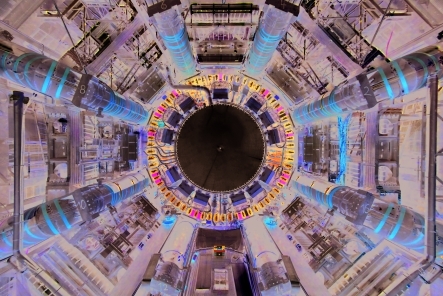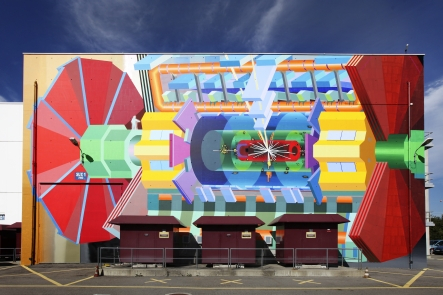
A view of the ATLAS detector at the Large Hadron Collider (image: Claudia Marcelloni, CERN)
After nearly half a century, the hunt for the Higgs boson may finally be over. Scientists at CERN, which operates the Large Hadron Collider (LHC), confirmed this week that they have discovered a particle which fits the description of the elusive "god particle".
Speculation have been intense after CERN unintentionally released a video in which Joe Incandela, a spokesman for one of the two teams hunting for the Higgs boson, stated that a new particle had been observed. Although he stopped short of calling it the Higgs boson, he revealed that it had all the hallmarks of the mysterious particle. "We can see that it decays into two photons, for example, which tells us it's a boson, it's a particle with integer spin, and we know its mass is roughly 100 times the mass of the proton." Confirmation that a Higgs boson-like particle had indeed been discovered came in a press statement from CERN and was also explained in a seminar at the International Conference for High Energy Physics (ICHEP).
The Higgs boson was first proposed by Edinburgh University physicist Peter Higgs in 1964, who welcomed the announcement, acknowledging that he never expected the discovery to happen in his lifetime. Higgs had hypothesised that this elementary particle was necessary to give all other particles mass. The Higgs boson is the final piece of the Standard Model of Particle Physics, a theoretical model which describes all fundamental particles and forces that control our universe. For decades the particle remained impossible to pin down and the hunt for it became the focus for the LHC. Scientists used the LHC to smash together protons at almost the speed of light and to search the debris of collisions for traces of particles that sprang into existence for just a fraction of a second before disintegrating again.
In this interview, University of Auckland nuclear physicist David Krofcheck, who is attending the ICHEP conference, explains the discovery and what it means for our understanding of matter. You can also listen to an earlier interview about his own research at the LHC and, here, you can also watch Peter Higgs' talk "My life as a Boson".

This large mural of the ATLAS detector was painted by Josef Kristofoletti. It shows the detector with a photon collision superimposed, depicting what a Higgs boson may look like (image: Claudia Marcelloni, CERN)

